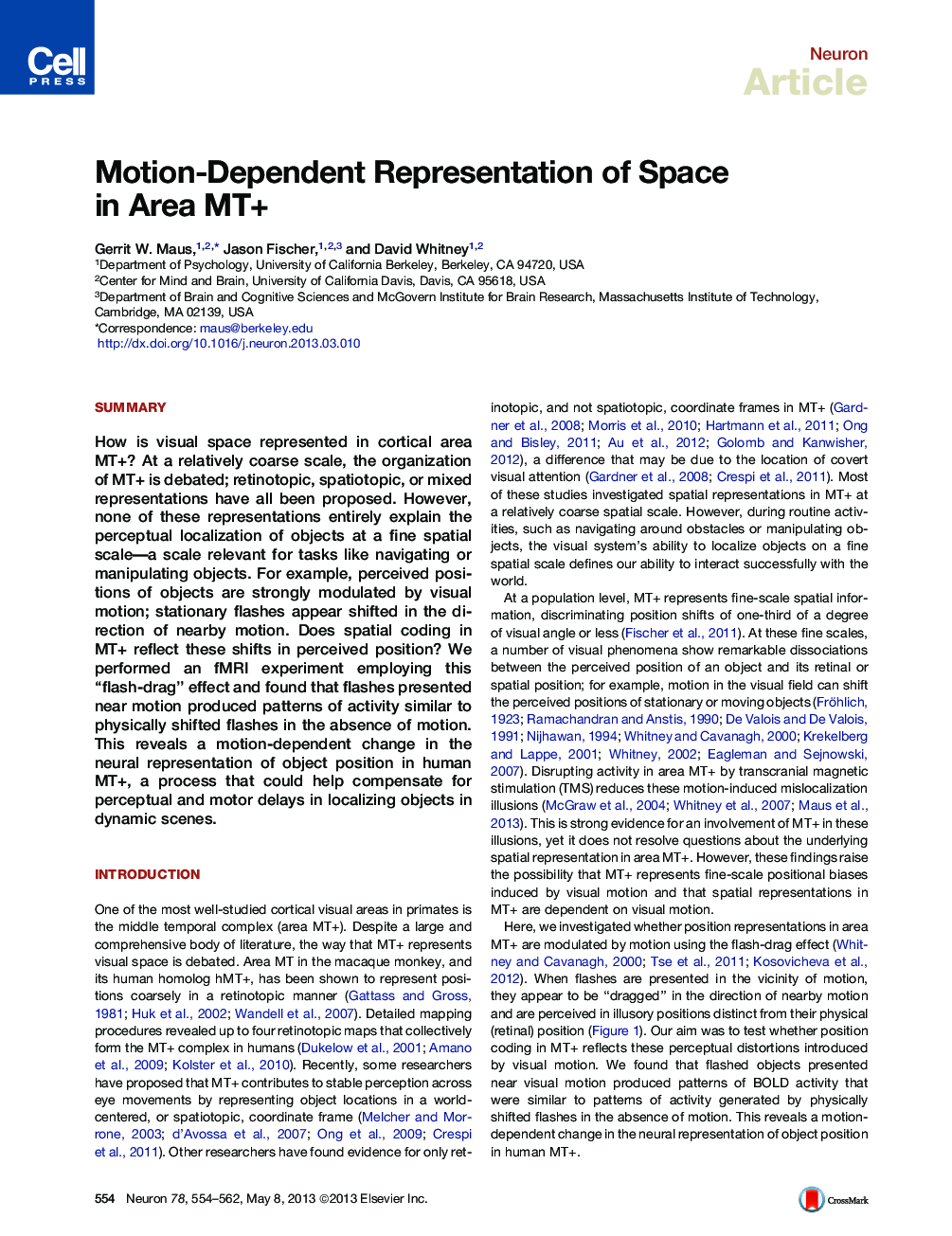| Article ID | Journal | Published Year | Pages | File Type |
|---|---|---|---|---|
| 4321327 | Neuron | 2013 | 9 Pages |
SummaryHow is visual space represented in cortical area MT+? At a relatively coarse scale, the organization of MT+ is debated; retinotopic, spatiotopic, or mixed representations have all been proposed. However, none of these representations entirely explain the perceptual localization of objects at a fine spatial scale—a scale relevant for tasks like navigating or manipulating objects. For example, perceived positions of objects are strongly modulated by visual motion; stationary flashes appear shifted in the direction of nearby motion. Does spatial coding in MT+ reflect these shifts in perceived position? We performed an fMRI experiment employing this “flash-drag” effect and found that flashes presented near motion produced patterns of activity similar to physically shifted flashes in the absence of motion. This reveals a motion-dependent change in the neural representation of object position in human MT+, a process that could help compensate for perceptual and motor delays in localizing objects in dynamic scenes.
► Visuo-spatial representations within area MT+ are debated ► Visual motion is known to shift perceived positions of objects ► We show that motion-induced position shifts are reflected in patterns of MT+ activity ► The fine-scale representation of space in MT+ is modulated by visual motion
